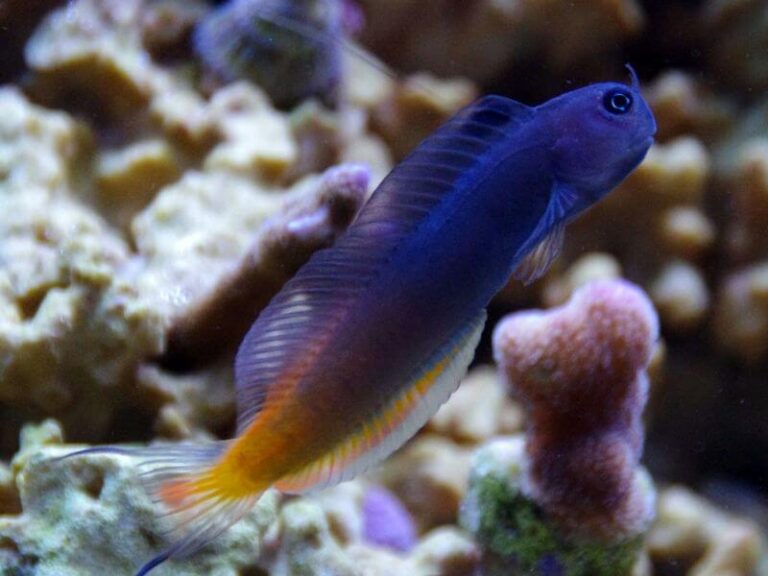If you’re looking to add some saltwater fish to your aquarium, you may be overwhelmed with the many options available. You might also not be sure which fish to get based on aesthetics, ease of care, price, or other factors. In any case, some fish are more popular than others for various reasons.
Here we’ll look at 15 of the most popular saltwater fish to help you find the perfect addition to your tank.
There are several reasons the Ocellaris clownfish is among the most popular saltwater fish out there. One of these reasons is the fame that the Disney/Pixar animated film Finding Nemo brought to this species, but the fish’s previous popularity inspired its choice for this film because of its ease of care and appealing nature. It’s an extremely beginner-friendly fish that can add some color and entertainment to your tank.
As peaceful fish, they get along well with other members of their own species as well as others, with these fish thriving in small groups. Just be sure to give them plenty of sea anemones to provide shelter for them.
Learn more about this species through our Oscellaris clownfish care guide.
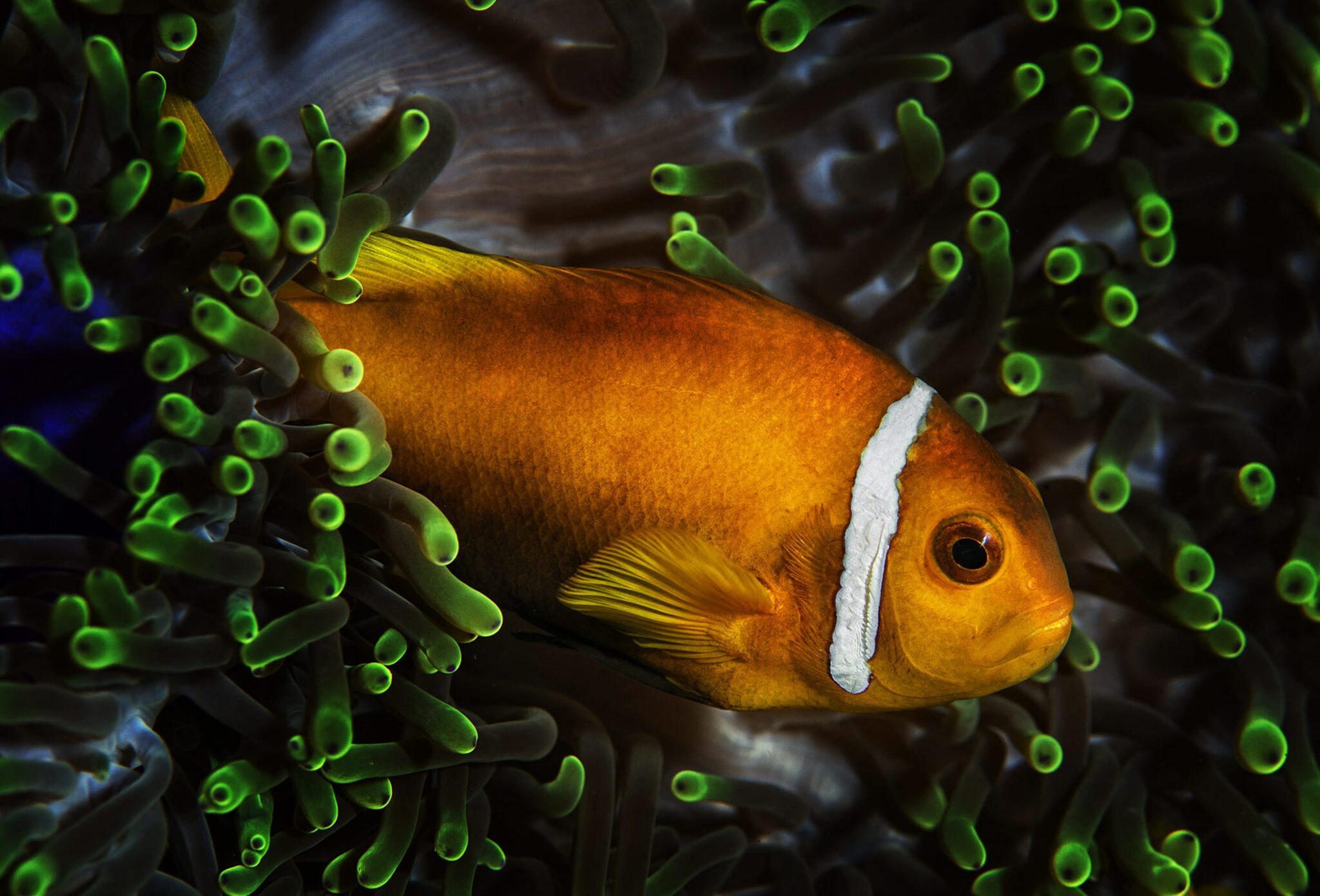

If you want a damselfish for your tank, you may want to go with a Green Chromis over others. The ease of care of this fish and its lack of aggression make it a standout from other damselfish that tend to be a bit more temperamental. They’re also reef-safe, which is a huge plus for many reef aquarists.
Check out our Green Chromis care guide to learn all about this species.
Like the Green Chromis, the Coral Beauty angelfish is more peaceful than its cousins. While many angelfish tend to be on the aggressive side, the Coral Beauty is notably more peaceful. They have beautiful orange and blue coloring, and they tend to feed on smaller fish and algae, making them great cleaner fish.
You’ll find more details about this species over at our Coral Beauty angelfish care guide.
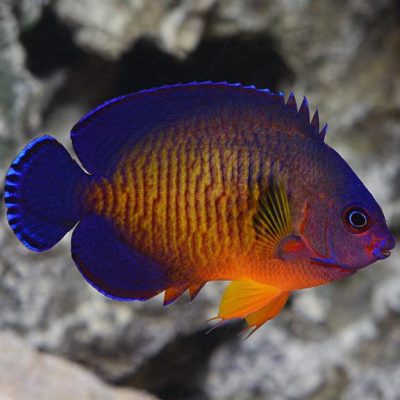
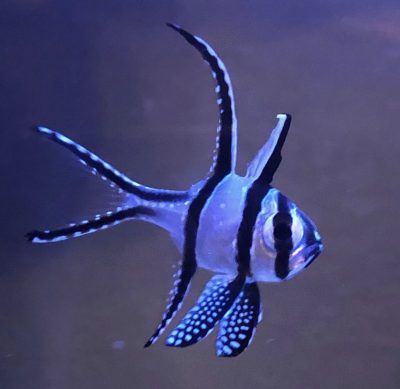
The Banggai cardinalfish is another highly popular option available. They’re great for reef tanks and they’re generally pretty friendly toward other Banggais and other species. However, they can get a tad aggressive as they get older, so be cautious with adults.
One issue with this fish to keep in mind is that this species is endangered, to the point of near extinction. As such, you should only buy Banggais that were bred in captivity. Find out more about what this fish is all about with our Banggai cardinalfish care guide.
If you’re a fan of Finding Nemo or Finding Dory, this fish will make a great companion to your Ocellaris clownfish as a rep for Dory. This fish’s signature blue and yellow coloring makes it an appealing addition, and it experiences color changes as it ages.
The one potential downside to this species is they don’t work well with other tangs. So, try to stick with one and pair it with other species from clownfish to chromis.

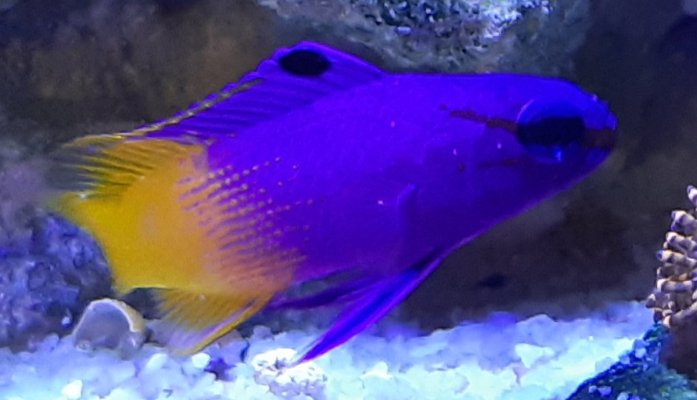
This species is among the most popular for its colors and ease of care. In fact, it’s arguably the most famous saltwater fish available. It features a distinctive purple and pink coloration that’s unmistakable and vibrant, with the body fading to yellow toward the tail.
The Royal Gramma should be in a low-light environment and pairs well with Green Chromis and clownfish.
Our Royal Gramma care guide will fill you in on the details about this fish.
While the Green Chromis is exceptionally popular because of its gentler nature compared to other damselfish, other options are available for your tank if you have the patience for more territorial fish.
For example, you have Blue Devil damselfish and the Yellowtail damselfish, both of which we have care guides to discuss in greater depth.

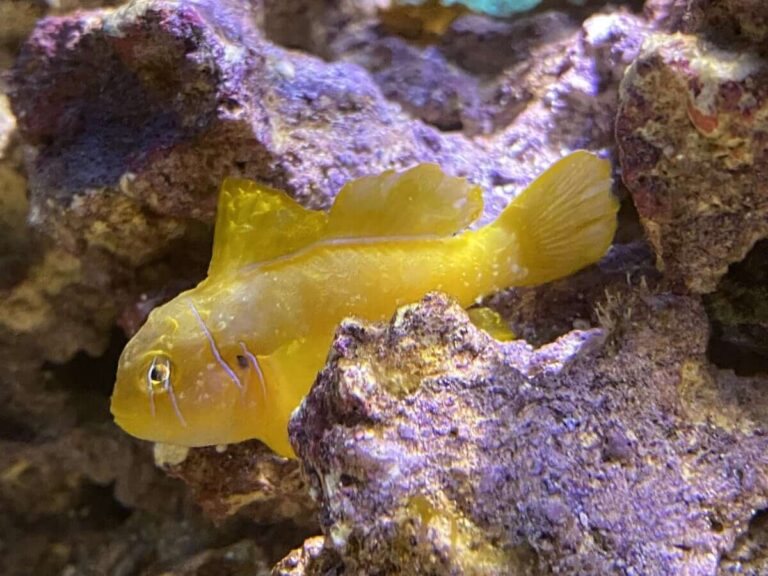
For something tiny but rich in color, consider a Clown goby. This fish’s unique neon yellow coloration makes it a vibrant addition, and this species is perfect for smaller tanks. You really don’t need an aquarium that’s any larger than 10 gallons to hold these little guys.
For more information about this fish and its care requirements, read our Clown goby care guide.
Several species of hawkfish can make great aquarium fish. They tend to stay toward the bottom of the tank and offer some unique colors to spruce up the environment. They tend to hunt using an amusing ambush technique, and they are excellent for pest control in your tank.
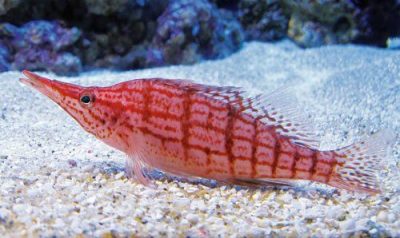
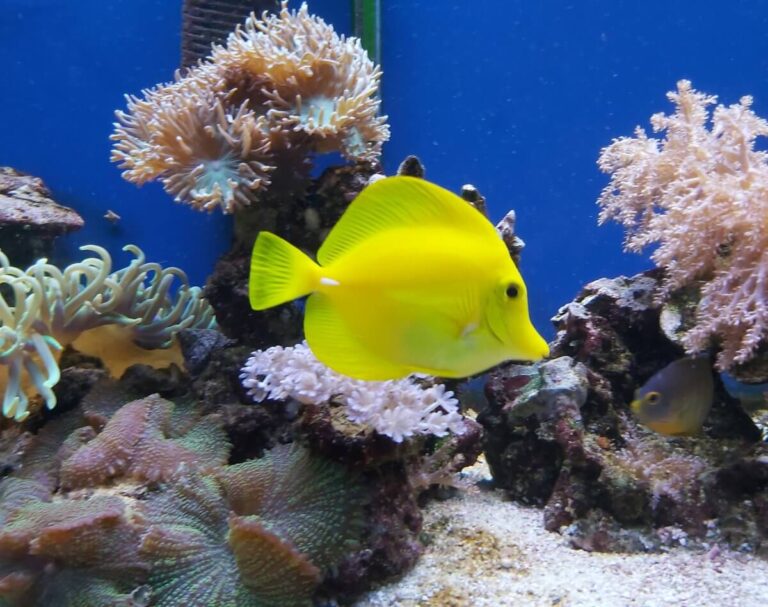
If yellow is more your color over blue, you may want a Yellow tang over a Blue tang. Its color is unique in that it changes depending on the light setting; during the evening hours in low-light settings, it tends to exhibit a paler and dimmer yellow, while it showcases a brighter color during the daylight hours.
Although not the nicest-looking fish in this group, it serves a helpful function that makes it very popular among aquarists: It’s a perfect cleaner fish. Specifically, the Lawnmower blenny can get rid of unwanted algae in your tank, hence its name.
Take a look at our Lawnmower blenny care guide for more info about this fish.
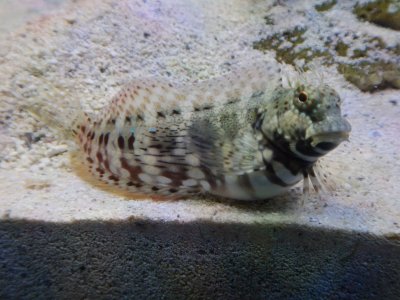
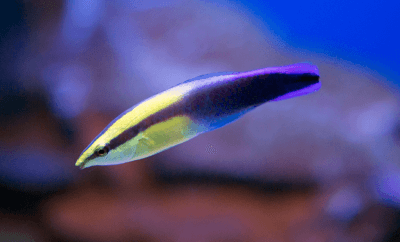
For a better-looking alternative to the Lawnmower blenny, another suitable cleaner fish is a Cleaner wrasse. While Lawnmower blennies feast on algae, the Cleaner wrasse is ideal for removing excess dirt, parasites, and dead skin from other nearby fish.
The dottyback is rich in color but, unfortunately, is also rich in temper. This species loves to pick fights with others with a very territorial attitude. However, with the right environment, they do make an enjoyably colorful addition to tanks. They have many color variations depending on the specific species of dottyback, from gold and purple to pink and yellow.
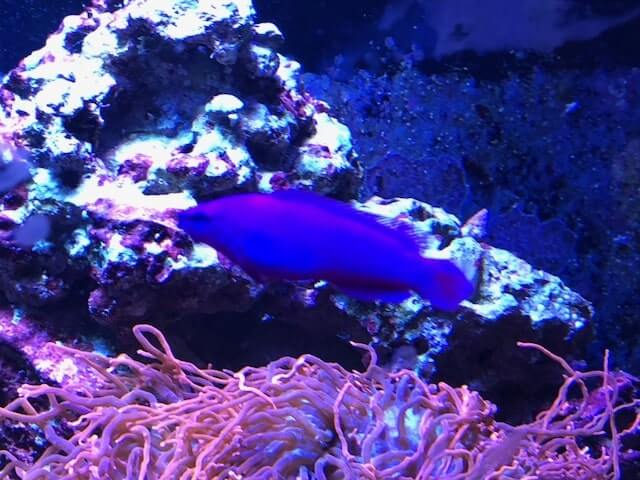

The Raccoon butterflyfish is another distinctive-looking fish. It gets its name from the dark circles around its eyes, but it also features appealing yellow coloration. Just keep in mind that this fish is territorial and won’t do well with other butterflyfish. This species also requires large tanks of at least 120 gallons and they’re not reef-safe.
For another colorful choice, consider the Bicolor blenny with its orange posterior and black-brown anterior. This is a small blenny that can act as a cleaner in your tank, devouring overgrowths of algae before they have a chance to become a real problem. This feature makes them a more appealing alternative to the Lawnmower blenny.
Learn more about this species with our Bicolor blenny care guide.
These are simply some of the many popular saltwater fish available. To find the right fish for you, shop around and look for a fish that meets your needs and works best with your tank. You can also browse our saltwater fish care guides for more in-depth details about individual species.
